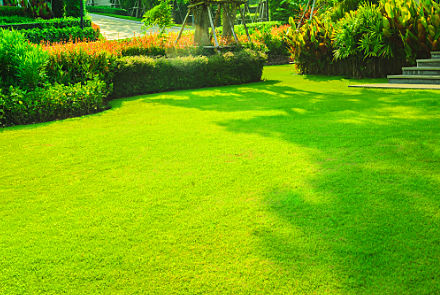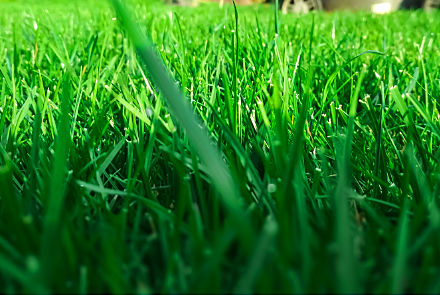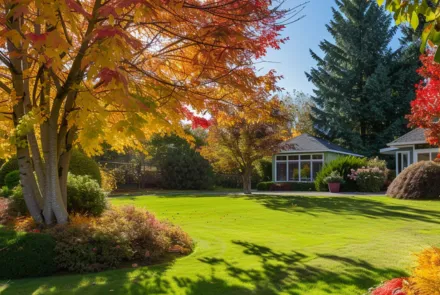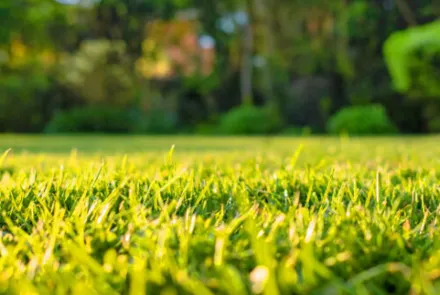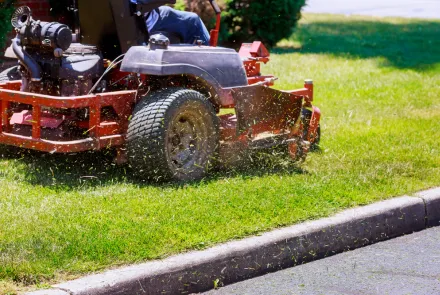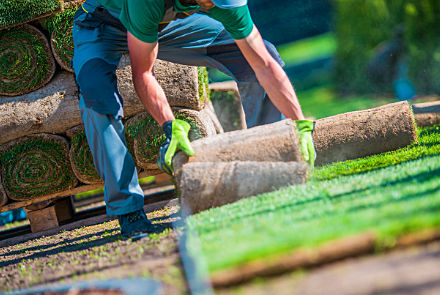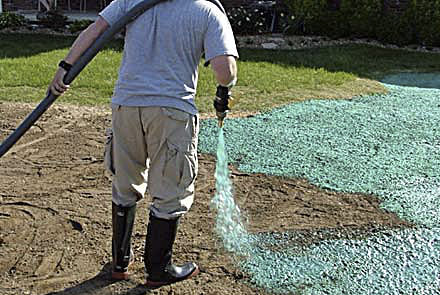- Telephone
The Premium Lawn Care Program
The Premium Lawn Care Program is a lawn care package designed to help homeowners build a healthier, stronger and greener lawn. It includes six (6) visits per year to keep on top of weeds, pests and diseases; and the fertilising of your lawn using the correct fertilisers and rates depending on the time of year.
The chemicals and fertilisers used are high quality and used by green-keepers on bowling greens, turf wickets, golf courses and sporting venues throughout Australia.
Contact us today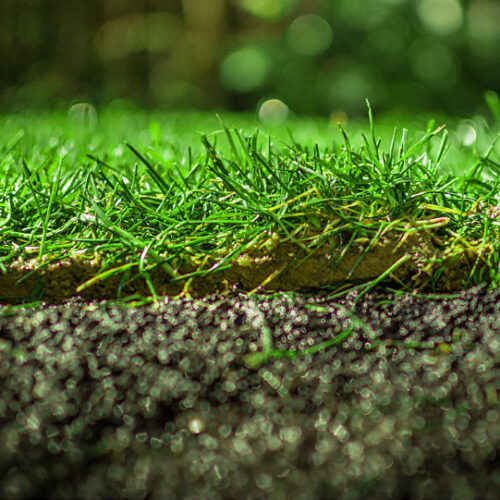
Weed control
We will be using pre-emergent herbicides to stay on top of the weeds. Basically, they kill weed seeds before they germinate, breaking into the life-cycle of the plant and will remain active in the soil for six to twelve months. It will be EXTREMELY important that you water this chemical into the soil so that it activates.
Spot spraying with various chemicals throughout the year may also be required but will be used at a minimum and only as required.
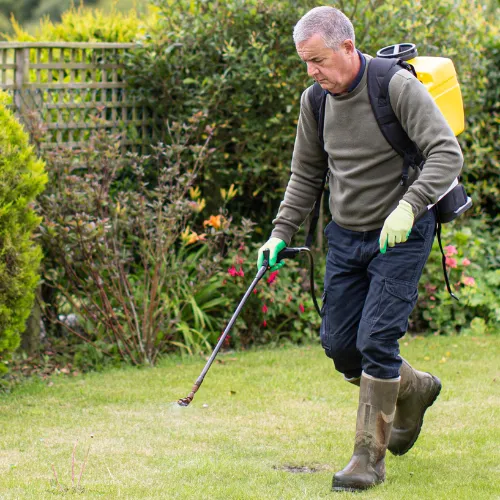
Pest control
Army Worm and the larvae of Black Beetle are ever-present but, in plague numbers, can devastate a lawn in days.
We use two insecticides called ‘Acelepryn’ and ‘Tempo Xtra’ to help prevent these and other pests from harming your lawn. Again, it is used as a ‘preventative’ measure rather than a reactive one. They will remain active in the soil for, up to, six months.
Both chemicals have a low toxicity reaction to bees, birds and aquatic life and an extremely low toxicity reaction to mammals making it the most preferred insecticide for a residential lawn.
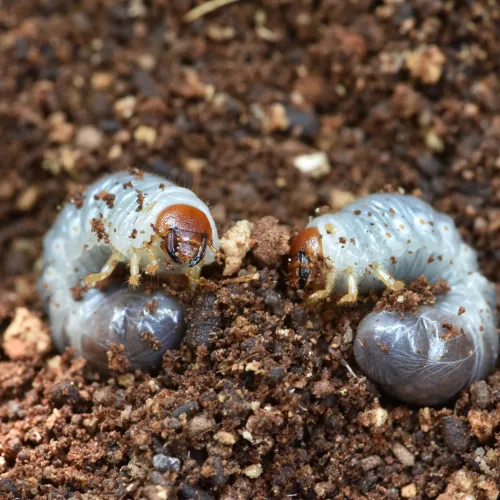
Fertilising
Depending on the time of year, a blend of different fertilisers and trace elements will be applied to your lawn to encourage growth and strengthen the sward.
Organic fertilisers are also applied a couple of times over the spring and summer to add essential nutrients to the soil that will be taken up by your lawns’ root system.
Some of the fertilisers may need to be watered in and we’ll notify you, beforehand, if necessary.
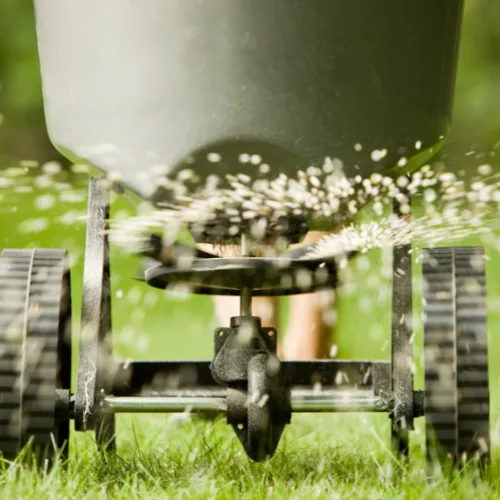
If you would like to speak with us directly, don’t hesitate to contact us as we are always available for a friendly chat
The program
The ‘Premium Lawn Care’ Program is designed to promote a strong, green and healthy lawn. This is achieved by concentrating on the use of more organic products and reducing the use of chemicals.
The key factor in attaining a strong and healthy lawn is regular and correct mowing habits. Any program incorporating the above elements is rendered useless if proper mowing habits are not undertaken.
The program can start at any time of the year and will continue for six (6) visits. (A guideline is shown below.) It is a recurring program and subscriptions are due on an annual basis.
As herbicides are being used throughout the year, if your lawn has weeds, you can expect discolouration in the lawn of some description. Please read the information in the table below for a better idea.
Seasonal visits will take place in-
SUMMER
January
A fungicide is applied to help prevent ‘Brown Patch’ from attacking your lawn.
Two fertilisers are applied this visit- a granular fertiliser containing organic material which will feed your soil with important nutrients and a liquid fertiliser containing a high potassium ratio to help guard your lawn against disease over the summer months.
A pesticide will also be used to kill grubs, including Army Worm. As it has a residual effect for 6 months, it will be already activated in the soil when Army Worm arrives in March/ April.
AUTUMN
March
We’ll be using a nitrogen-based, liquid fertiliser this round to help green the lawn for the coming winter. Furthermore, a second dose of pre-emergent herbi- cide at ½ rate will help prevent Winter Grass from germinating over the colder months.
WINTER
May
Targeting Winter Grass, Moss, Sedge and broad-leafed weeds. After treating the lawn for moss, the moss will turn a whitish yellowy colour. It will be left in the lawn until Spring to ensure total eradication. Further applications may be necessary to ensure a total kill. Winter Grass will yellow off before dying. Sedge will go brown. Broad-leafed weeds have germinated and will either be
spot-sprayed or blanket-sprayed to eradicate them.
July
Spot-spraying for Winter Grass, Sedge and Veldt. An application of pre-emer- gent herbicide is also used.
SPRING
September
Targeting all broad-leafed weeds including Bindii, Clover and Oxalis as well as Onion Weed. A granular, nitrogen-based fertiliser will also be applied to generate quick, green growth as the warmer weather kicks in.
Please note: Spearhead, which we use to kill broad-leafed weeds can have an effect on buffalo, turning it a mottled yellow colour. It has a stronger effect on the old, common buffalo lawns. This will go away after a few weeks. Unlike many of the chemicals used, the chemical used for killing Onion Weed in Buffalo grass can take up to 4-6 weeks to take effect. The Onion Weed will turn white.
SUMMER
November
Targeting Carpet Grass, Crab Grass and broad-leafed weeds. It must be noted that, in some lawns, Carpet Grass can cover large areas and that large brown patches caused by necrosis can be expected after spraying.
If you wish to proceed with the ‘Total Lawn Care Program’, then please email us at info@prolawn.com.au
to confirm;
If you have any further questions regarding the program, then please call us on 1300 PROLAWN.
Once we have received your confirmation, you will be placed in the program. At this stage, you are still under no obligation to proceed. We will organise the run and call you to set a commencement date. It is always preferable to meet with clients but understand that most people have heavy schedules and work commitments and an initial meeting isn’t always possible. On arrival, we will assess your lawn, determine its requirements and apply the necessary products. We will then leave you with a written report on the type/s of grass/es you have and the weeds/ pests you have. It is after the completion of the first visit that you are committed to the program- an invoice will be emailed to you and will include the first visit.
This is not a ‘ONE TREATMENT-KILLS ALL’ program. This is a program, and is similar to taking a course of antibiotics that your doctor will prescribe. Different weeds emerge at different times of the year and are targeted, as such. The program starts in August and results should be noticed by the end of February.
Book Now© ProLawn 2024


